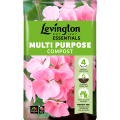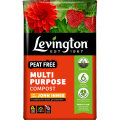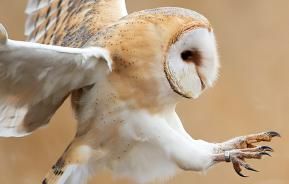Feeding birds isn't just about scattering a few crumbs on the ground and hoping for the best. To attract different types of birds to your garden, you'll need a variety of feeding devices and foods as different birds feed in different ways. A table, a hanging feeder, a ground feeder, nuts, seeds, grains whichever you choose will determine which types of birds will visit.
An Introduction To Feeding Birds
Just like humans, birds need a balanced diet and have a variety of nutritional needs that will be fulfilled from many different sources. There are a huge number of specialist bird feeds on the market which can be bewildering if you are new to the practice of feeding birds. Bird expert Sam Marriage gives a bit more detail as to why this is the case in this 'Guide to Feeding Garden Birds' video:
The reason why there are so many varieties of bird food is that different types of birds like, and need, different foods and these are provided through different methods.
Different Feeding Stations
We have compiled a list of the different feeding stations available and matched 10 of the most common British garden birds and their preferred feeding method to help you select the right food and feeding station for your garden.

Bird Table
Bird tables, whether they are with or without a roof, are a good place to start feeding the birds in your garden. Ensure that they are in a quiet spot, away from trees and bushes that can provide a way for squirrels or cats to ambush feeding birds. The table should give the birds a good sight around the garden so they can spot predators before they become a meal themselves. They should have a raised rim which helps retain the food, with an opening at each corner to allow rainwater to drain and for easy cleaning. A wide wire mesh around the table will provide extra protection for feeding birds but will deter the larger types of birds (jays, woodpecker and thrushes) from feeding in your garden.
Hanging Feeder
Hanging feeders are ideal for seeds, nuts and grains. Nut feeders are made from a wire mesh approximately 6mm wide and are ideal for peanuts. Seed feeders are transparent tubes with feeding holes strategically placed around the cylinder. They attract a host of different types of bird including Tits, Siskins and Greenfinches. As Niger seed is very small this should be offered in its own special hanging feeder.
Hanging feeders can be placed at various points around the garden and offer a variety of seeds and grain to attract lots of different types of birds. It is important to regularly clean these feeders to ensure that disease (E-Coli for example) does not spread among the birds, a special disinfectant that isn't harmful to birds can be purchased.
Ground Feeder
A ground feeder should be mounted no more than 10cm off the ground and it is advised that food is refreshed and that they are fractionally moved each day to minimise the build-up of droppings and the risk of disease. A variety of food can be offered on the ground feeders but be aware that larger types of bird (pheasants and pigeons) will be attracted to feed on these as well as smaller types (wren, starlings and robins).
Feeding Habits Of The 10 Most Common British Garden Birds
Insectivores, granivores, omnivores, 10 of the most common British garden birds include all these different types of bird and each has a preferred method of feeding.
Blue Tit
The diminutive Blue Tit is an insectivore but does enjoy seeds and nuts. They will frequent a bird table but prefer to get their nuts and seeds from a hanging feeder. Peanuts (plain) and sunflower seeds are particular favourites for this type of bird.
Blackbird
The omnivorous Blackbird is the most commonly spotted type of bird in the UK and will eat from a table though the preference is to feed on the ground. Blackbirds love flakes of maize along with mealworms, sunflowers and even meaty dog food! They also enjoy many other insects and berries that can be found in the hedgerows.
Robin
The Robin is the UK's favourite bird and with its cheery bright red breast and social manners, it's easy to understand why. Robins are insectivores that will eat from a bird table but prefer to eat their meals from ground feeders. Robins love insects but will also feast on grated mild cheese a variety of seeds and fruits and crushed peanuts.
Great Tit
The largest of the UK Tits, the Great Tit is an insectivore that prefers to eat from a hanging feeder, though a bird table will suffice. The bully of the bird table it will be the Great Tit that starts any fights with the smaller Tits so it is a good idea to have a couple of feeding stations around the garden to prevent this aggressive show. Pack your hanging feeder with sunflower hearts and other seeds to attract the colourful Great Tits to your garden. This type of bird also likes berries from the bushes.
Dunnock
Another insectivore, the Dunnock hops on the ground and consequently prefers to feed on ground tables. Dunnocks are quiet, unobtrusive birds that like to keep close to cover so ground tables with a scattering of seeds should be positioned accordingly.
Chaffinch
The most common, and colourful, of the UK's finches the Chaffinch is a granivore that will feed on anywhere. bird table, ground feeder, hanging feeder the Chaffinch isn't fussy. They will love sunflower seeds and sunflower hearts along with many other seeds and grains.
Collared Dove
The soft-hued Collared Dove has only become a common sight in the UK since the 1950s and is a granivore that prefers to feed on the ground though will feed on a bird table if access is easy. Cereal grains and small seeds are their preferred food and they like to eat in the company so expect to see more than one at a time.
House Sparrow
The cheerfully chattering House Sparrow is declining in numbers through the UK and so one way to help stop the disappearance of this type of bird is to provide food for it. This granivore isn't fussy where it will feed whether it's a bird table, ground feeder or hanging feeder. It loves all kinds of seeds and will devour fat balls in the winter along with half a coconut swinging from a branch.
Goldfinch
The delicate, granivore that is the Goldfinch prefers to get its seeds from a hanging feeder. The Goldfinch is particularly keen on Niger seeds, sunflower seeds and other small seeds. With its delicate, thin beak the Goldfinch is also able to feed on thistle or teasel seed heads.
Greenfinch
The stocky green and yellow Greenfinch can frequently be seen squabbling over black sunflower seeds which they prefer to access from a hanging feeder. The Greenfinch is a granivore that loves a fat ball or half a coconut along with a peanut or three.
What different types of birds have you spotted in your garden? Where do the birds in your garden like to feed? Share your sightings with us here.








